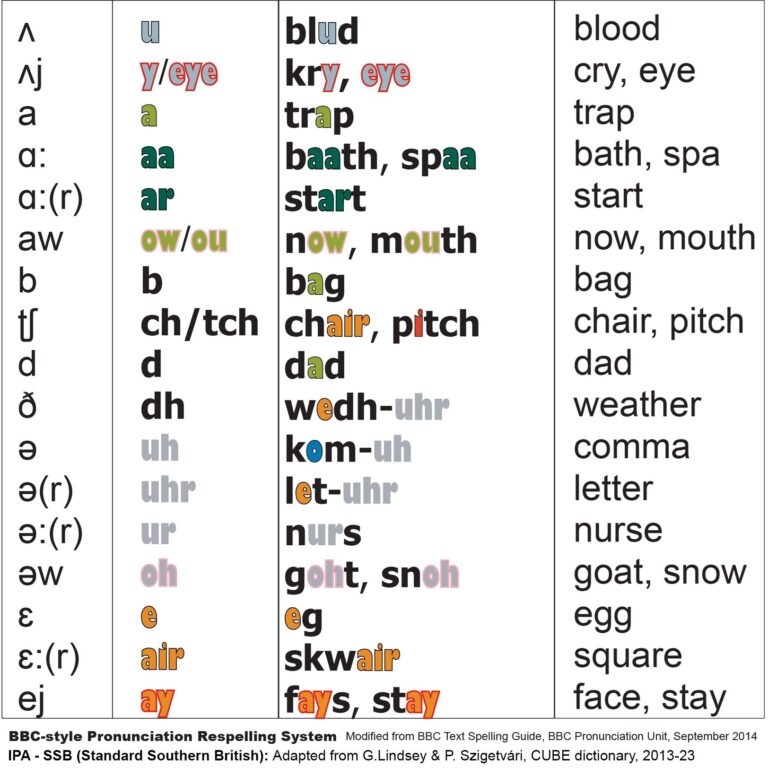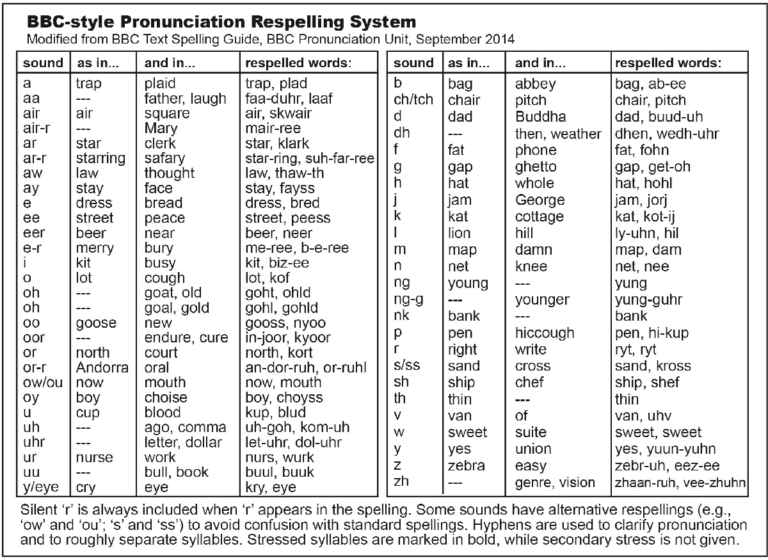BBC Text Spelling
A pragmatic respelling system for native speakers
The BBC Text Spelling (BBC-TS) was created by the BBC Pronunciation Unit to help broadcasters correctly pronounce anything they may need to say, including foreign names. It is designed to be easily understood by native English speakers. Intuitive, with some puzzling choices
It is mostly written with the typical spelling for each sound, such as "u" for the strut vowel, with a few additions, like "uh" for schwa. In some cases, such as the diphthong in the 'price subset,' different spellings ("y", "igh") are used in different environments to avoid confusion with standard spelling. However, when "y" appears between a consonant and a vowel, it represents a glide; for example: beauty byoo-tee. 
The 'historical r' is always included, assuming it will be pronounced or not depending on the speaker's accent. Syllables with primary stress are indicated by bolder font. The way words are broken into syllables is not an attempt to reflect actual syllabification but rather a method to ensure the most intuitive transcription. When a vowel is long, the following consonant is placed after the hyphen: Peter pee-tuhr. When a vowel is short, the consonant goes immediately after the vowel, before the hyphen: Jenny jen-ee. 
It has some potential for illustrating differences between rhotic and non-rhotic accents through alternative respellings, such as transcribing Parker as par-kuhr for rhotic and paa-kuh for non-rhotic accents. However, it is not intended for this purpose. Standard Southern British (SSB)
London's current accent
External Links: Respelling Systems
♦ BBC Text Spelling BBC News, N.D.
♦ Wikipedia Pronunciation Respelling Wikipedia, N.D.
♦ Dictionary.com Phonetic Respelling Dictionary.com, 1995-2023
